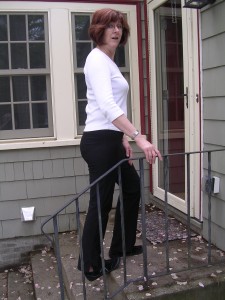These are some of the reasons why clients have found their way to me.
1. “I am a healthy guy but sometimes when I work out at the gym I end up with an exacerbation of arthritis pain in my hip and both knees. This means that I cannot work out for many days until my pain subsides.” Joe B.
An exacerbation of arthritic pain can happen for a few of reasons. In Joe’s case it was improper technique when he performed some of his strengthening exercises for his legs. Another reason arthritis pain will flair is if you have progressed your endurance training too quickly. Old or ill fitting athletic shoes will not provide adequate shock absorption for weight bearing exercise. My knees will begin to “talk to me” when my athletic shoes have too many miles on them.
The National Institute of Health recommends range of motion exercise, strengthening exercise and aerobic or endurance exercise combined with healthy eating and weight management to minimize arthritic pain. Working with a Personal Trainer who is also a Physical Therapist will ensure that you will train safely. As a Physical Therapist I have a thorough understanding of anatomy and physiology. I understand the mechanics of all joints in the body and how to work the muscles that surround each joint properly. I can also work in collaboration with your physician to manage your arthritis.
2. “I have been a musician for many years. I felt like some of my muscles were getting weak and that my posture was “off.” I needed someone to address all of my issues.” Ellen B.
When I begin working with a client the first thing I do is assess your strength, range of motion and posture. In Ellen’s case I also watched her play the flute and piano. The information we gain from this evaluation guided everything we did in our subsequent visits.
I do not want to waste your time and money. I want my clients to benefit from each of our sessions together.
3. “I am 29 years old and was working with a personal trainer. He had me lifting heavy weights and hurt my back when doing one of the exercises. Lynn taught me exercises that were appropriate for me and gave me tips on how to relieve my back pain.” Amy M.
It is very important to perform a strength, range of motion and posture assessment prior to beginning training. This information along with teaching proper technique is crucial for training without injury.
4. “I had leg pain for several years. I went to a chiropractor regularly and would feel better for a short time but then the pain would return. My doctor told me there was nothing wrong with my leg.” Marilyn B.
My PT assessment of Marilyn revealed Iliotibial Band Syndrome and muscle strength imbalances in her leg. She also had impaired range of motion in her leg. As we addressed these issues Marilyn’s pain subsided.
5. “Six months ago I broke my leg. My insurance benefit has run out. I am able to walk and return to work but my strength, balance and agility is still not 100%. I wanted to work with a trainer who understood total rehab not just lifting weights.” Karen M
It takes more specific training to regain balance and agility. Karen wanted to be as active as she was prior to her injury. She required significant balance retraining and agility drills which were progressed as her strength improved. My training as a physical therapist allowed Karen and I work in depth on these impairments and address her goals successfully.
 Oh the Hamstrings! When they get tight many things begin to happen. Many people with low back pain will experience some relief once hamstring tightness is addressed. As we age our stride length when walking will actually shorten if we do not maintain good hamstring length. And then there is injury prevention. Do not even get me started……
Oh the Hamstrings! When they get tight many things begin to happen. Many people with low back pain will experience some relief once hamstring tightness is addressed. As we age our stride length when walking will actually shorten if we do not maintain good hamstring length. And then there is injury prevention. Do not even get me started……

